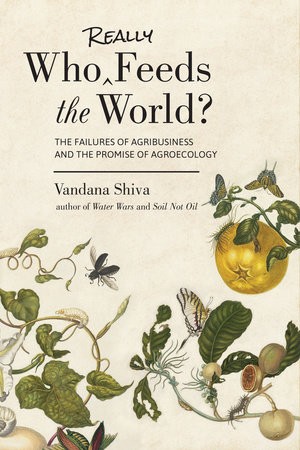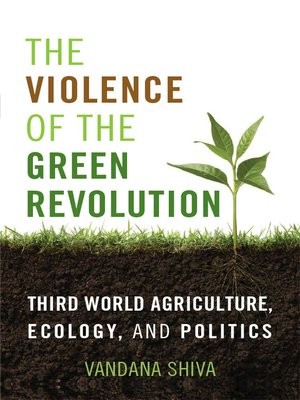Vandava Shiva was one of the earliest challengers to corporate control of food and the food system. In her most recent book, "Who Really Feeds the World: The Failures of Agribusiness and the Promise of Agroecology" (2016), Shiva continues the activism. While I am generally in agreement with the positions advocated in the book, it is a frustrating read from an academic perspective. Many stats and claims are mentioned without references (I found well over 50 without references), some sources that are listed are decades old and no longer reflect the current situation, some arguments are value-driven and emotionally-based as opposed to supported by evidence, there is an undertone of a doomsday narrative with a binary with-me or against-the-world positioning, and there is a strong romanticism for the past that most historians would suggest does not reflect reality. While believers in the message may not find these to be critical problems, this book will likely not reach beyond its echo chamber because of these problems.
A few notes from my reading:
- "We are facing a deep and growing crisis rooted in how we produce, process, and distribute food. The planet's well-being, people's health, and societies' stability are severely threatened by an industrial globalized agriculture driven by greed and profits. An inefficient, wasteful, and nonsustainable model of food production is pushing the planet, its ecosystems, and its diverse species to the brink of destruction." (ix)
- "The food question becomes an ethical question about our relationship with the Earth and other species; about whether we have the right to push species to extinction or deny large numbers of the human family safe, heathy, and nutritious food." (p. xx)
- "Productivity and sustainability are much higher in mixed systems of farming and forestry that produce diverse outputs. The productivity of monocultures is low in the context of diverse outputs and needs." (p. 50)
- "we conducted field experiments in organic farms in which farmers grew twelve crops (baranaaja), nine crops (navdanya), and seven crops (saptarshi). In an acre of farmland, organic baranaaja produced 73.5 percent more protein, 3,200 percent more vitamins, 67 percent more minerals, and 186 percent more iron than conventional monoculture cropping did. Organic navdanya produced 355 percent more protein, 5,174 percent more vitamins, 57 percent more minerals, and 160 percent more iron than conventional monoculture cropping did, per acre of farmland. And finally, organic saptarshi produced 66 percent more protein, 54 percent more minerals, and 153 percent more iron than conventional monoculture cropping. When agricultural output is measured in terms of "health per acre" and "nutrition per acre" instead of "yield per acre," biodiverse, ecological systems clearly have a much higher output." (p. 53)
- "Small farms produce more food than large industrial farms because small-scale farmers give more care to the soil, plants, and animals, and they intensify biodiversity, not external chemical inputs. As farms increase in size, they replace labor with fossil fuels for farm machinery, the caring work of farmers with toxic chemicals, and the intelligence of nature and farmers with careless technologies." (p. 60)
- "Corporations say that GMOs are substantially equivalent to non-GMO crops and food [for approval], but the same corporations also simultaneously claim that GMOs are new and different, that they are invention [for patents]. Under this logic, the same GMO is natural when is comes to avoiding responsibility for safety, but it is different from the nature - or unnatural - when it comes to owning it." (p. 69)
Shiva sets forth directions for the way forward, in summary:
- "We need to move from the fiction of corporate personhood to the reality of real people who grow, process, cook, and eat real food." (p. 127)
- "from mechanistic, reductionist science to an agroecological science based on relationships and interconnectedness" (p. 127)
- "from seed as the 'intellectual property' of corporations to seed as living, diverse, and evolving: toward seed as the commons that is the source of food and the source of life" (p. 128)
- "from chemical intensification to biodiversity intensification and ecological intensifications, and from monocultures to diversity" (p. 128)
- "to decommodify and liberate land and labor, and focus on the living intelligence of nature, with her diversity and potential for creating abundance" (p. 129)
- "from food that destroys our health to food that nourishes our bodies and minds" (p. 129)
- "from the obsession with 'big' to a nurturing of 'small', from global to the local" (p. 130)
- "from the false idea of competition to the reality of cooperation" (p. 132)


